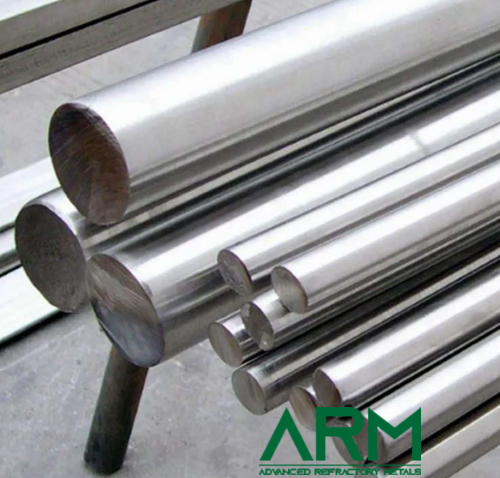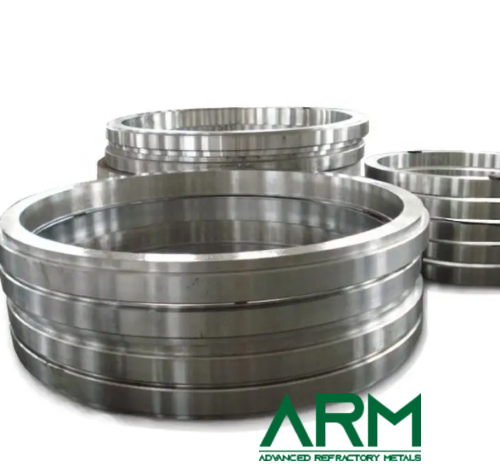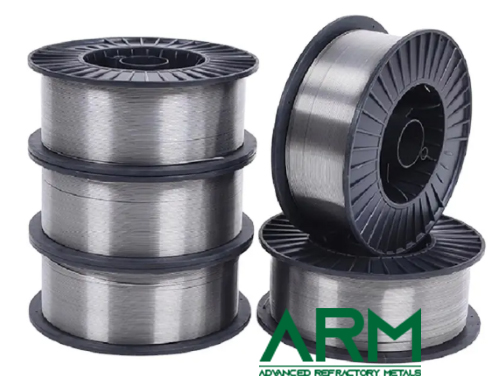Common Nickel-Based Superalloys and Their Uses

Introduction
Nickel-based superalloys are essential materials used in industries that demand exceptional performance under extreme conditions. Known for their superior resistance to high temperatures, corrosion, and mechanical stresses, these superalloys are vital in applications such as aerospace, energy production, chemical processing, and marine environments. Here are some of the most common types and their key applications.
Inconel Series
Inconel alloys are primarily composed of nickel with varying additions of chromium, iron, and other elements like molybdenum and niobium, depending on the specific alloy. Inconel series are designed to withstand extreme environments, particularly those involving high temperatures, oxidation, and corrosion. These abilities make them essential in a wide range of industrial applications, particularly in aerospace, gas turbines, chemical processing, and marine environments.

Some of the most commonly used alloys in the Inconel series include Inconel 600, 625, 718, etc. Here’s an overview of these key alloys:
- Inconel 600 is used in applications requiring resistance to high-temperature oxidation and carburization, such as furnace components and chemical processing equipment.
- Inconel 625 offers outstanding fatigue and thermal-fatigue strength and is highly resistant to oxidation and corrosion, making it ideal for aerospace components, turbine blades, and chemical processing.
- Inconel 718 is widely used in aerospace and gas turbines due to its exceptional strength and resistance to heat and corrosion, especially in turbine blades and exhaust systems.
Hastelloy Series
Hastelloy alloys are primarily composed of nickel, with varying amounts of molybdenum, chromium, iron, and other elements like tungsten and cobalt, depending on the specific alloy. The Hastelloy series is specifically engineered to provide exceptional resistance to corrosion, especially in harsh environments that involve high temperatures and chemical exposure. These characteristics make Hastelloy alloys essential in chemical processing, aerospace, and pollution control.

Among the most widely used alloys in the Hastelloy series are Hastelloy C-276 and Hastelloy C-22. Below is an overview of these key alloys.
- Hastelloy C-276 is widely used in chemical processing industries, particularly in environments that require resistance to strong acids, including sulfuric acid and hydrochloric acid. It is also used in pollution control equipment.
- Hastelloy C-22 is known for its superior resistance to pitting, stress-corrosion cracking, and oxidation. It is ideal for use in chemical plants, waste treatment, and pollution control systems.
Monel Series
Monel alloys are a family of high-strength, corrosion-resistant metals primarily composed of nickel (around 63%) and copper, with varying amounts of other elements such as iron, manganese, and silicon. The most common grade is Monel 400, which has excellent resistance to seawater and steam at high temperatures. Monel alloys are known for their high tensile strength, excellent resistance to acids and alkalis, and their ability to maintain mechanical properties in extreme environments.

Monel alloys also offer good weldability and formability, making them versatile for various industrial uses. Other grades, like Monel 500, offer higher strength at elevated temperatures, further expanding their range of applications.
- Monel 400 is resistant to corrosion in seawater and other harsh environments, making it ideal for marine hardware, pumps, and valves.
- Monel K-500, an alloy with enhanced strength and corrosion resistance, is used in aerospace and marine industries for parts like propeller shafts, valve stems, and other components that require both strength and resistance to saltwater corrosion.
Nimonic Series
The Nimonic series refers to a group of high-performance, heat-resistant alloys primarily based on nickel. These alloys are designed to withstand extreme temperatures and high-stress conditions, making them ideal for use in applications like turbine blades, combustion chambers, and other components in aerospace, power generation, and automotive industries.
Nimonic alloys typically contain a high percentage of nickel (up to 90%), along with significant amounts of chromium, iron, cobalt, and sometimes titanium and aluminum. Some well-known grades in the Nimonic series include Nimonic 80A, which is widely used in gas turbines.
- Nimonic 75 is used in gas turbines and high-speed aircraft engines for its ability to maintain strength and resistance to creep at high temperatures.
- Nimonic 80A is a more advanced version, often used in aerospace and turbine applications due to its higher strength at elevated temperatures.
Incoloy Series
The Incoloy series is a group of high-performance alloys based on nickel and designed for exceptional resistance to high-temperature oxidation, carburization, and corrosion. These alloys are used in industries such as chemical processing, aerospace, and power generation due to their excellent strength and durability in extreme environments.
Incoloy alloys typically feature high nickel content (around 40-60%), with varying amounts of chromium, iron, and sometimes other elements like molybdenum or copper, to enhance specific properties. Some notable grades in the Incoloy series include:
- Incoloy 800 is used in heat exchangers, petrochemical processing, and furnace components where high-temperature stability is essential.
- Incoloy 825 is especially resistant to a wide variety of acids, making it suitable for use in chemical processing, offshore oil and gas applications, and acid environments.
Haynes Series
The Haynes series consists of a family of high-performance superalloys primarily based on nickel and cobalt, designed for use in extremely high-temperature and high-stress applications. These alloys are particularly valued for their strength, oxidation resistance, and excellent performance in environments with elevated temperatures and corrosive conditions, such as gas turbines, jet engines, and chemical processing.
Some well-known grades in the Haynes series include:
- Haynes 230 is known for its excellent oxidation and thermal stability at high temperatures, making it perfect for aerospace and power generation applications.
- Haynes 242 offers excellent resistance to creep and oxidation, making it ideal for applications in gas turbines, power plants, and aerospace.
René Alloys
The René alloys typically feature a high nickel content (around 60-70%), with significant additions of chromium, cobalt, and other elements like molybdenum and tungsten. These alloys are renowned for their excellent strength, oxidation resistance, and creep resistance at elevated temperatures, making them essential in aerospace, gas turbines, and other demanding sectors.
Notable grades in the René series include:
- René 41: A high-strength, nickel-based superalloy with excellent resistance to creep and oxidation, commonly used in aerospace turbine blades and other high-temperature applications.
- René 80: Designed for high-temperature service, this alloy offers superior resistance to thermal-fatigue cracking and is often used in power plants and industrial gas turbines.
|
Types |
Common Grades |
Applications |
|
600, 625, 718 |
Aerospace, gas turbines, chemical plants |
|
|
C-276, C-22 |
Chemical processing, pollution control |
|
|
400, K-500 |
Marine environments, aerospace, valves |
|
|
75, 80A |
Aerospace, gas turbines |
|
|
Incoloy |
800, 825 |
Heat exchangers, furnaces, petrochemical |
|
Haynes |
230, 242 |
Aerospace, power generation |
|
René |
41, 80 |
Aerospace, turbine blades |
Conclusion
Nickel-based superalloys, including Inconel series, Incoloy series, Monel series, Nimonic series, Haynes series, and Hastelloy, are indispensable in high-performance applications. From aerospace to chemical processing, these alloys offer a combination of strength, corrosion resistance, and thermal stability that makes them vital for ensuring the reliability and performance of critical components. For more superalloys, please check Advanced Refractory Metals (ARM).
{{item.content}}
LEVE A REPLY
{{item.children[0].content}}
{{item.content}}






